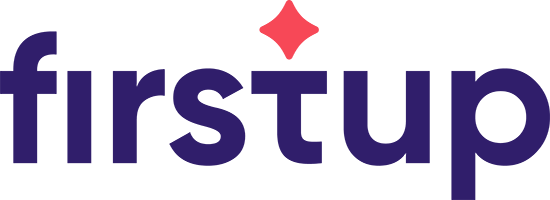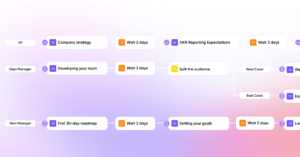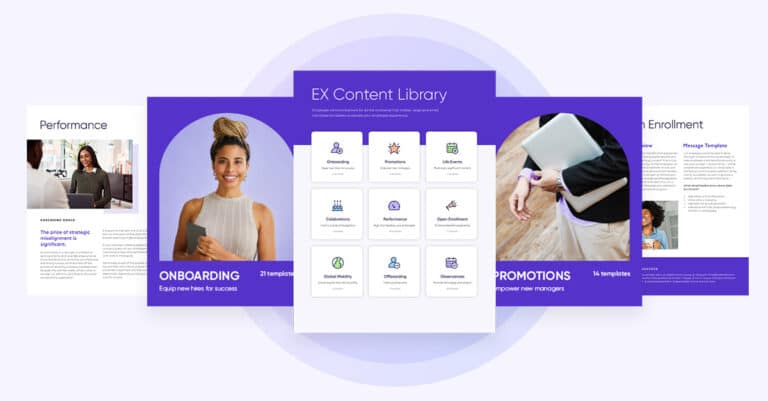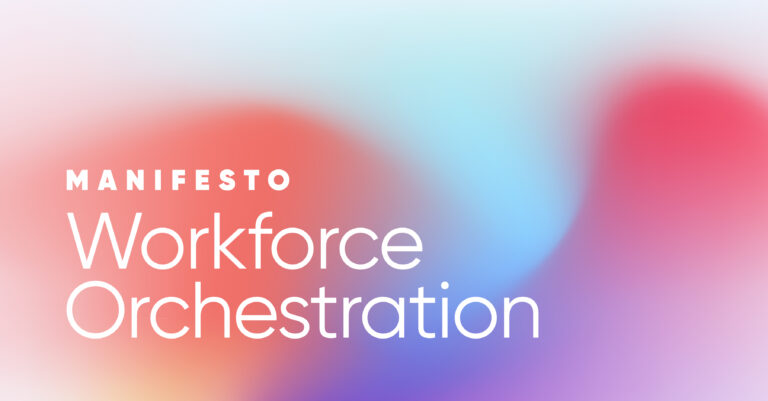The global workforce is at a critical turning point. Organizations are under pressure to keep up with the breakneck pace of AI development. At the same time, they struggle to support employees facing unprecedented workplace stress.
As usual, deskless workers bear the brunt of it all; although they make up 80% of the global workforce, they’re often out of reach of traditional corporate systems and are more vulnerable to mental health stress.
Firstup surveyed 1,000 U.S. adults working in deskless roles to learn more about their communication challenges and preferences. These are the biggest takeaways:
- Traditional HRIS systems can often miss deskless workers and keep critical company updates and resources out of reach
- Ineffective, irrelevant, and impersonal communication hurts employee wellbeing—and makes productivity nosedive
- Right-channel, right-time information increases deskless workers’ engagement, confidence, and performance
AI advancements and a wellbeing crisis converge in a perfect storm
By the end of 2026, 80% of enterprises are expected to adopt AI, significantly impacting 60% of jobs in advanced economies and 40% of workers’ core skills. To keep up, organizations must rush to retrain and upskill their workforces—but the process won’t be quick. On average, companies estimate that 40% of their workers will need up to six months of reskilling support.
In addition to upskilling resources, employees urgently need wellbeing support: Seventy-seven percent report work-related stress; 48% report burnout. In the years ahead, 80% of risk professionals predict employees’ burnout will have a “significant impact” on businesses.

Deskless workers are at the center of the storm
Upskilling challenges and stress affect the entire workforce, but deskless workers face greater risks. Seventy-seven percent of frontline workers will need significant upskilling to stay competitive in new, AI-dominated workplaces. Meanwhile, 94% of frontline workers are more likely to experience mental health stress than their desk-based colleagues.
Unfortunately, existing communication systems aren’t doing enough to support frontline workers:
- Frontline workers can’t access critical information: Sixty-nine percent of organizations prioritize email for internal communications, but 54% of deskless workers have limited email access. One in four workers say they don’t know where to find critical information.
- Organizations send frontline workers irrelevant or poorly timed information: Thirty-nine percent report receiving messages at inconvenient times, while 21% say the company information they receive is irrelevant to their role.
- Deskless workers feel disconnected from their organizations: Twenty-four percent say poor communication is responsible for their feelings of disconnect from company culture.

Why communication matters: the business implications of stressed, untrained workers
There’s a strong connection between communication, wellbeing, and productivity. When communication is irrelevant, impersonal, and hard to find, deskless workers struggle to access critical company information, like training and wellbeing resources. This not only exacerbates feelings of disconnect, stress, and burnout, but it stalls productivity and makes it harder for employees to do their jobs—ultimately causing missed strategic opportunities and other operational setbacks.
1. The skills gap widens
Organizations are at a crucial juncture: Either retrain your workforce to use AI or fall irrevocably behind the competition. But with communication systems that don’t effectively reach 80% of the workforce, too many organizations risk missing this window of opportunity. In the long run, that means widening the skills gaps between desk-based and deskless workers and losing competitiveness in increasingly AI-driven markets.
2. Wellbeing concerns worsen
Sixty-seven percent of American workers say their companies offer mental health care services—but these services are next to useless if employees can’t access them. If organizations continue to rely on communication systems that neglect deskless workers, burnout rates will rise, employee engagement will plummet, and attrition will soar.
3. Productivity rates fall
Without easy access to critical updates, deskless workers’ performance suffers. Irrelevant company information delivered at inconvenient times also disrupts their workflows, further bruising productivity and operational efficiency. Interestingly, it’s communication that makes the difference: Sixty-one percent of deskless workers believe better communication with more timely and relevant updates would improve their performance and productivity.

Modern communications help you weather the storm
By modernizing communication approaches, organizations can implement strategies to help their entire workforces keep up with technological advancements and overcome wellbeing challenges. Notably, communication strategies must meet the needs of both desk-based and deskless workers.
- Implement mobile-first solutions: Email doesn’t suit on-the-go, deskless employees. But mobile-first solutions bypass the limitations of traditional HRIS systems to meet deskless employees where they are with timely, relevant, role-specific information.
- Empower managers to personalize communication: Forty-two percent of deskless workers prefer getting information directly from their managers, which fosters a stronger sense of belonging. In turn, role-relevant, personalized communication better supports workers’ skills development and wellbeing.
- Deploy intelligent delivery systems: With intelligent communication platforms, organizations can align information-sharing with deskless workers’ unique needs to deliver right-time, right-channel updates, track engagement, and scale learning and wellbeing initiatives to drive engagement and increase productivity.
Learn how to build more resilient, future-ready workforces
Outdated and ineffective communication systems compound technology and wellbeing challenges, keeping critical training and mental health resources out of reach for 80% of workers. As organizations prepare to take on AI adoption, workforce upskilling, and rising burnout, you need new strategies that effectively connect, develop, and support every employee, whether they’re desk-based or deskless.
Building a Future-Ready Workforce with Modern Communication
Discover how modern communication strategies can empower your organization to develop a future-ready workforce that’s equipped to tackle AI, wellbeing, and tomorrow’s challenges.










